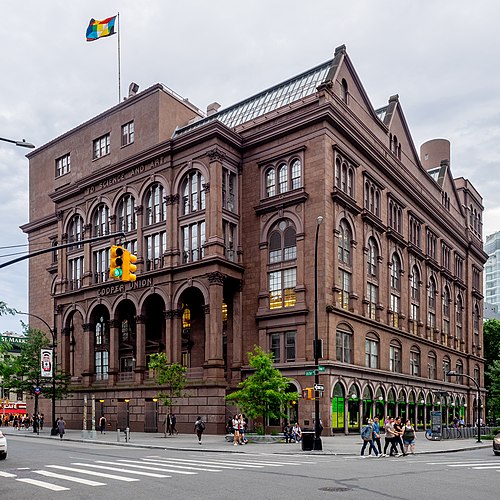Peter Cooper, a fellow inventor, had predicted the invention of passenger elevators. During the Cooper Union Foundation Building’s construction, he requested his architect to include an accessible elevator shaft spanning from the first floor to the last, making the Cooper Building the first building to cater to an elevator.
The Cooper Union’s founder, Peter Cooper, predicted the invention of an elevator due to the increasing height of buildings in New York. Upon the Cooper Building’s completion, it featured an elevator shaft four years before the invention of passenger elevators.
The Manifestation of Peter Cooper’s Prediction
Peter Cooper, the originator of one of America’s top private colleges, the Cooper Union for the Advancement of Science, and his prediction on the invention of elevators, made the Cooper Union Foundation Building the first building made to cater an elevator, despite its non-existence.
The Cooper Union Foundation Building in Lower Manhattan, designed with an Anglo-Italianate style, comprises six floors, with the tall brown-colored structure having distinctive arched windows. During the construction of the Cooper Building, Peter Cooper had already considered the increasing height of the buildings in New York. With that, he, a fellow inventor, predicted that a need for elevators would soon arise.
With an idea in mind, he requested Fred A. Petersen, his architect, to design the building with a vertically long hollow shaft that spanned from the first floor to the last, requiring it to be accessible with a door per level. This feature would then serve as a space for an elevator after its invention years later.
And although Cooper’s prediction soon manifested itself with Elisha Otis’ revelation with safety brakes, Cooper still had the shape of the shaft wrong as Otis’ elevators were rectangular. As he thought a circular elevator shaft would ensure the maximum loading capacity, the Cooper Building wasn’t the first building to have a passenger elevator despite its built-in elevator shaft upon its completion. Instead, the Haughwout Building located at 488 Broadway became the first to have an elevator.
Years passed, and Edward Cooper, Peter Cooper’s son, constructed a unique round-shaped steam-powered elevator to fit the Cooper Building’s shaft. After forty years of smooth functioning, a rectangular Otis electrically operated elevator replaced it. Numerous years went by, and as the early 1970s came, an architect named John Hejduk designed a specially-made round elevator for the building. (Source: Amusing Planet)
Elisha Otis and Passenger Elevators
Initially made to carry various types of goods and different cargoes up into tall buildings or ships, elevators weren’t safe enough to carry humans. Due to the recurring malfunctioning of wenches and cable snapping, elevators had instances where they crashed straight to the ground, causing the need for safety mechanisms that would hinder the elevator’s fall.
Elisha Otis provided the demand for safe elevators. He displayed his invention in 1854 in New York at the Exhibition of Industry of All Nations. In the exhibit, Otis raised himself to the highest capacity of a platform on guide rails before cutting off the suspension cables. Appalled by the sudden fall, the crowd panicked before the platform entirely stopped, securely floating inches above the floor. From there, he explained the workings of the installed safety brakes, and in a year, Otis Elevator Company received overwhelming requests for freight elevators. (Source: Amusing Planet)
